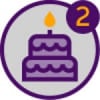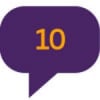Thinking about infusions.... Leqembi or Kisunla??



I am looking into the two different infusions available for Alzheimer's where I live. I have like a thousand questions but here are a few....
Which "brand" is most effective?
Which has least side effects?
Are the infusions painful?
If they do cause side effects... How long do they typically last? Can you "gut it out" or are they overwhelming?
Do you actually feel the effects of them working?
Any input is appreciated.
Thanks
Comments
-
GEH—
I'm coming up on my 13th infusion of Lequmbl. It seems to be effective in sloeinslowing the progression of AD. No, infusions are not painful- no more than giving blood- little jab at first. Only real bad side effects I've had was after thw first one- like a "getting used to it" thing. Body aches,, tiredness, difficulty getting out of bed. "Feeling it working"? Not really
4 -
I'd concur with much of what lfaust58 posted. I had my 31st infusion of Leqembi last Monday. At the 30,000 ft level in comparing Leqembi & Kisunla, you are trading off the following:
Leqembi
Kisunla
Infusion Frequency
Every 2 weeks for 18 months
Every 4 weeks
Infusion Duration
18 months for initial dosing, then switch to monthly infusions after initial treatement. Note that FDA-approval of subcutaneous version of Leqembi for maintenance dosing is pending on 8/31 (i.e. one week from today).
Until Amyloid cleared as determined by PET scans. In the phase 3 trial, 17% stopped taking Kisunla at 6 months, 47% at 12 months, and 69% at 18 months.
Effectivity, in terms of % slowing in cognition per the Clinical Dementia Rating - Sum of Boxes (CDR-SB) cognitive test
27%
29%
ARIA Rates
Lower
Higher
ARIA stands for Amyloid-Related Imaging Anomaly. It may sound innocent but this is a dangerous side effect - brain swelling and brain bleeding.
As both Leqembi & Kisunla utilize infusions to get the drugs into your body, people receiving the infusions can have what are referred to as "infusion-related reactions". Examples are those listed by lfaust58 in their post. They have nothing to do with the active drug, again they are related to the artifact of getting an infusion.
If you like to watch videos, I'd recommend the video at the link below. Dr. Paul Aisen. He is a Professor of Neurology and Director of the Alzheimer’s Therapeutic Research Center at the Keck School of Medicine at USC in Los Angeles. In the interview, he directly compares various aspects of Kisunla & Leqembi. The video takes a full hour, but I found it worth my time. Dr. Aisen "gets it", in the sense that he understands what those of us on the medication are going through. During the video, he addresses questions from the audience, which are similar to questions you raised. For example, the question about changes in cognition for those on either drug. The title slide in the graphic below is misleading, as again, the video covers both Leqembi & Kisunla.Another imporant aspect, which is addressed by Aisen, is APOE status. The risks of these drugs vary by how many APOE4 alleles you have (lower risk of ARIA if you have zero APOE4 alleles, risk goes up some if you have one copy of the APOE4 gene, risk goes up alot if you have two copies of the APOE4 gene).
3 -
Hi lfaust58…Thank you so much for the feedback. 😊
0 -
LBC83.... Lots of info. Thank you. I have not watched the video yet but will in morning. I was already leaning towards the Leqembi but the information you provided solidified my choice. The Aria part is of concern to me. MRI of my brain before any meds already showed evidence of three brain bleeds. I have had two really sucky (yes that is a medical term lol) neurologist that really did not explain what that meant except that I could not take any of the "slow the process down" meds vs "help with symptoms meds". I am now unpatiently waiting (lol) till Sept 10th appointment with a Barrow's Neurological neurologist so I can discuss with him my options with the pre-existing things I have. Looking forward to getting some options offered and explained. Again thanks for the detailed information provided. Very informative and helpful. GEH :)
1 -
There is a lot of information for you to read online in addition to talking to fellow posters.
From the Barrows site:
- Lecanemab (Leqembi): Approved by the FDA in early 2023, lecanemab targets and binds to beta-amyloid proteins and prevents them from clustering to form the plaques contributing to disease progression. To date, lecanemab is most beneficial for those with early signs of Alzheimer’s-related cognitive decline. However, more research and long-term studies are crucial to fully understanding the drug’s benefits and risks.
- Donanemab (Kisunla): Donanemab also targets amyloid plaques but focuses on a specific type of amyloid called modified pyroglutamate amyloid. This type of amyloid is found mainly in the plaques themselves. Because Donanemab targets established plaques, it may work best in the early stages of Alzheimer’s. The treatment is given through an IV infusion once a month. The FDA approved it for Alzheimer’s patients in 2024.
2 -
Thank you so much!! Really appreciate the info. I have a Barrows Neurologist appointment coming up I think in like too weeks. I am a little bit armed with information so I hopefully will be able to discuss my situation and how best to move forward. Thanks again. GEH
0 -
Sorry "jfkoc".. I have a question for you. Have you had any personal experience with either one of these drugs? If yes, would you please be willing to sharing some with me?
0 -
I have not but have been following it for some time…I would ned to do considerable research before doing either.
I do have a friend getting infusions who has no real opinion as of yet as to the effectiveness.
Judith
1 -
Thanks Judith. Appreciate it
0 -
DH here is having Kisunla infusion #8 this week. The infusion itself is only about a half hour. For the first few he had to stay an additional half hour to check for an immediate reaction. Now they let us go right after it's done. What I do notice is that he naps after we get home.
So far no brain bleeding has showed up on the MRIs.
Is it helping? His functioning is the same, But, he's had a long slow decline, so who knows.
1 -
I had my first infusion of Donanemab a few weeks ago, and will have my 2nd infusion in 2 weeks. As far as pain, it's just a prick in the arm, just like giving blood, so no pain.
The infusion lasted for 30 minutes and then they kept me for another 30 minutes to check for side effects. I'm on the new protocol for Donanemab where the dose is raised each of the first 4 weeks, and then kept stable for the remaining 32 weeks. I had a slight headache right afterwards (the nurse said it's common, and may just be due to the warm water flushing out of the infusion). I had a slight headache later that day, that went away with Tylenol (what the nurse suggested I take in case of headache). I was told to watch out for any symptoms that resembled a heart attack - change in vision, inability to move a limb, strong pain in the heart area - I had none of those. I'm APOE negative on both sides of the family, so less likely to get ARIA (the brain swelling that causes the symptoms listed above).
I chose Kesunla (Donanemab) over Leqembi because you only have to be infused once per month, so less time wasted in hospitals, because treatment lasts only 36 months, and not for the rest of your life, and because the most recent results seem to indicate that the slowed progression may last past the end of treatment.
I've got PCA (Posterieur Cortex Atrophy), which is a rare kind of Alzheimers and so the early sympoms are mostly neuro-visual, and some problems finding words. As said above, Donanemab may be best for people early in progression. It doesn't roll back symptoms, but may prevent progression. That is what I am most ferverntly hoping!
By the way, does anybody else have PCA?0 -
One comment about the treatment duration for Leqembi & Kisunla. Both drugs clear amyloid plaque from the brain. So one might wonder why the recommendation is to stop Kisunlaq after amyloid plaque is gone, while the recommendation for Leqembi is to continue treatments.
To answer the question we have to get into a bit of biology. While Kisunla specifically targets a form of amyloid associated with amyloid plaques, Leqembi does not. Rather, Leqembi targets an earlier version of amyloid, before it forms into plaque. Previous studies have indicated this earlier version of amyloid is toxic to neurons and thus damaging to your brain.
As this is a free country, people on Leqembi can ignore the Doctor's recommendations and "pull the plug" to stop treatments after amyloid is cleared from their brain. But then the toxic amyloid will continue to accumulate and damage your brain.
Also, it often isn't mentioned, but after stopping Kisunla, the obvious question comes up: when would one have to restart Kisunla? To phrase it another way, the basic biology in your body that caused the amyloid plaque to accumulate in your brain hasn't changed with Kisunla. Rather, Kisunla simply removed the existing amyloid plaque. It seems an open question as to when somebody who stopped treatment with Kisunla might have to restart Kisunla treatment to again get rid of amyloid plaque that has accumulated since stopping Kisunla.1 -
Just joined, and finding this video already made it worth it.1
-
Welcome to the club you probably wished that you would never have to worry about joining 😣
0 -
It wasn't a surprise when DW got the results of the PET scan and found out she had Alzheimer's. Her dad died of it, and so did several of his siblings. At least there's drugs available now that might delay the progression.
0 -
So yesterday or the day before I met with my new neurologist at Barrows Neurological to get results of the PET scan and MRI etc. test taken recently Lots of information and I am not the brightest bulb in the box. So I am hoping if I provide details from a PET scan report etc. I have here my ALZConnected "peeps" could help me understand some of what it means.
Global SUVr 1.25 (reference greater than 1.14)
Centiloid value: 43.49.
Faze PVWM grade 1=caps or pencil thin lining
ARIA-H microhemorrhage grade mild
ARIA-H superficial siderosis grade None
But Long story short tho my Neuro Dr. did approved me to start infusions. I am going with Lequimbi. My Neru did indicated that after every fourth infusion that I will have another Pet Scan to check for any new bleeds. The infusion place is just about 20mins from my house. Things are looks up I think. GEH
0 -
Don't you love the unique terminology used in AD diagnosis?
I always like to preface my commentary by noting I'm an Engineer by training and not a Doctor. So this is obviously not my area of expertise!
Going backwards …
ARIA-H superficial siderosis grade None - This refers to iron deposits in your brain. None was found. This is a good thing.
ARIA-H microhemorrhage grade mild - The Leqembi Appropriate Use Recommendations (this is a published document, you can google the title to read a copy) includes Table 7 which describes mild / moderate / severe types of ARIA. Mild ARIA-H is defined as four or less microhemorrhages in your brain. This is essentially indicating that before starting on Leqembi, you already have at least one (but no more than 4) small leaks in the blood vessels in your brain. People with mild ARIA-H with no symptoms (i.e. headache, confusion, dizziness, nausea, etc) can start on Leqembi (as would be your case) or continue on Leqembi if ARIA-H was found to be mild after they started on Leqembi with a no ARIA-H. But if Leqembi causes more than four microhemorrhages, then the recommendation is to stop treatment until the microhemorrhages heal. So as an example, if you start on Leqembi and this causes one more microhemorrhage in your brain, and your other 4 microhemorrhages haven't healed, then you would have a total of 5 microhemorrhages. This would be classified as moderate ARIA-H, and the recommendation would be to suspend Leqembi treatment until one of your microhemorrhages heals.
I initially guessed the "WM" in Fazekas PVWM was referring to white matter (as my MRI results included a discussion of white matter). I turned to Google AI for help, and it confirmed my guess. The term "Fazekas" is referring to a unit of measure for white matter in your brain (sort of like degrees Farenheit is one scale for temperature). PVWM is Periventricular White Matter, which is brain tissue around the fluid-filled cavities of your brain. Grade 1 is the mildest grade on the scale for white matter lesions (so Grade 1 is a very good result). The term "pencil thin lining" means that the white matter seen on the brain scan was very thin and was right along the lining of the ventricles.
Centloid is the standard unit of measure for amyloid plaque in the brain. Your level of 43.49 can be compared with the average of 77.9 for those in the Leqembi Phase 3 clinical trial who took Leqembi (the average for those on placebo was 75.0, both of these numbers are at the start of the trial). During the trial, 24% of those on Leqembi became amyloid cleared (defined as a centiloid level below 30) at 3 months, 36% after 6 months of treatment, 54% after 12 months, and 68% after 18 months. You are starting at a much lower amyloid level, which is good. So the drug should clear your amyloid below 30 CL pretty quickly.
SUVR is another scale for amyloid measurements via PET scans, it is an acronym for Standardized Uptake Value Ratio. If you have ever baked a large turkey in an oven, and used a thermometer to measure the temperature of the meat, you would get different temperature measurements if you placed the thermometer at different locations in the turkey. Same sort of thing with amyloid in your brain. You may have high concentrations of amyloid in some parts of your brain, and low concentrations of amyloid in other places. The SUVR provides a "standard" way for people to read the colored pictures of your brain, to create a numerical score for what you might call your average amyloid brain level. Your global SUVR was 1.25, and apparently "normal" on that scale was 1.14. So your higher SUVR value is indicating you had more than "normal" amounts of amyloid, which is consistent with your Centiloid reading.1 -
Oh my gosh LBC83 you are frickin' AMAZING!! Your information has been so helpful and more importantly, reassuring. I thought that the "43.49" meant that almost 50% of my brain was covered in placques. Those four brain bleeds are the same ones (well, can't confirm the same ones but the same quantity) that showed up an MRI taken over three years ago. Stable, I am guessing better than the notation of new additional ones. Your information has really help me to not be so scared about my decision to try the Lequimbi infusion. You do not know how grateful I am. Thank you so so much. Virtual hug to you. 💖GEH
1
Commonly Used Abbreviations
DH = Dear Husband
DW= Dear Wife, Darling Wife
LO = Loved One
ES = Early Stage
EO = Early Onset
FTD = Frontotemporal Dementia
VD = Vascular Dementia
MC = Memory Care
AL = Assisted Living
POA = Power of Attorney
Read more
Categories
- All Categories
- 585 Living With Alzheimer's or Dementia
- 312 I Am Living With Alzheimer's or Other Dementia
- 273 I Am Living With Younger Onset Alzheimer's
- 16.8K Supporting Someone Living with Dementia
- 5.6K I Am a Caregiver (General Topics)
- 8.2K Caring For a Spouse or Partner
- 2.7K Caring for a Parent
- 225 Caring Long Distance
- 150 Supporting Those Who Have Lost Someone
- 17 Discusiones en Español
- 5 Vivir con Alzheimer u Otra Demencia
- 4 Vivo con Alzheimer u Otra Demencia
- 1 Vivo con Alzheimer de Inicio Más Joven
- 12 Prestación de Cuidado
- 3 Soy Cuidador (Temas Generales)
- 8 Cuidar de un Padre
- 23 ALZConnected Resources
- View Discussions For People Living with Dementia
- View Discussions for Caregivers
- Discusiones en Español
- Browse All Discussions
- Dementia Resources
- 8 Account Assistance
- 15 Help







